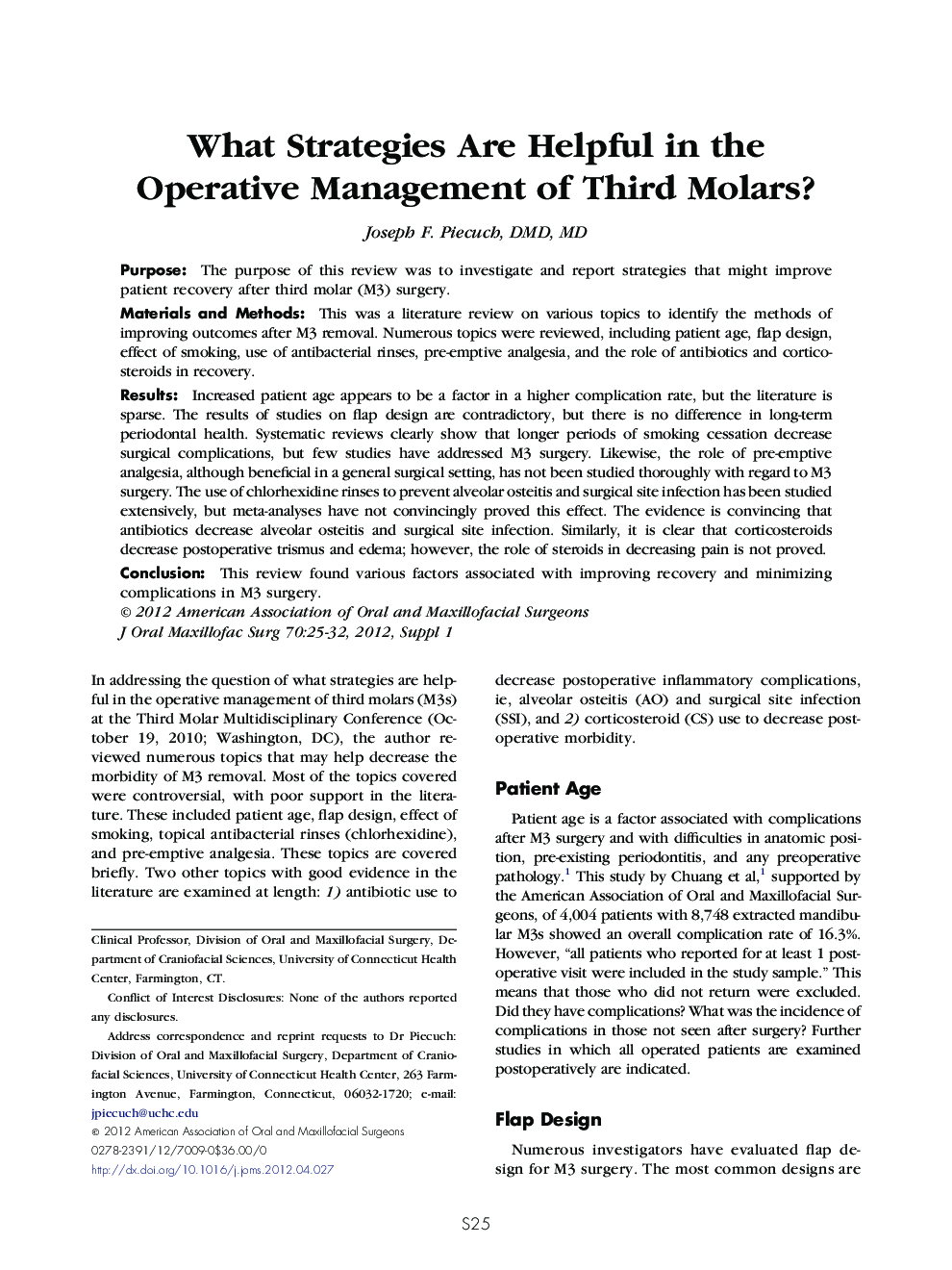| Article ID | Journal | Published Year | Pages | File Type |
|---|---|---|---|---|
| 3152878 | Journal of Oral and Maxillofacial Surgery | 2012 | 8 Pages |
PurposeThe purpose of this review was to investigate and report strategies that might improve patient recovery after third molar (M3) surgery.Materials and MethodsThis was a literature review on various topics to identify the methods of improving outcomes after M3 removal. Numerous topics were reviewed, including patient age, flap design, effect of smoking, use of antibacterial rinses, pre-emptive analgesia, and the role of antibiotics and corticosteroids in recovery.ResultsIncreased patient age appears to be a factor in a higher complication rate, but the literature is sparse. The results of studies on flap design are contradictory, but there is no difference in long-term periodontal health. Systematic reviews clearly show that longer periods of smoking cessation decrease surgical complications, but few studies have addressed M3 surgery. Likewise, the role of pre-emptive analgesia, although beneficial in a general surgical setting, has not been studied thoroughly with regard to M3 surgery. The use of chlorhexidine rinses to prevent alveolar osteitis and surgical site infection has been studied extensively, but meta-analyses have not convincingly proved this effect. The evidence is convincing that antibiotics decrease alveolar osteitis and surgical site infection. Similarly, it is clear that corticosteroids decrease postoperative trismus and edema; however, the role of steroids in decreasing pain is not proved.ConclusionThis review found various factors associated with improving recovery and minimizing complications in M3 surgery.
